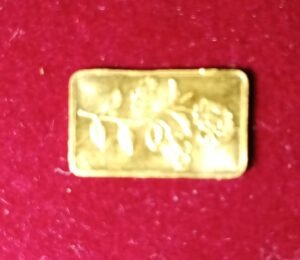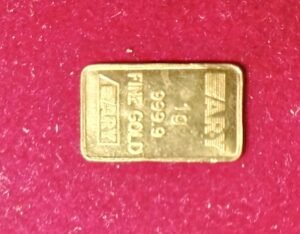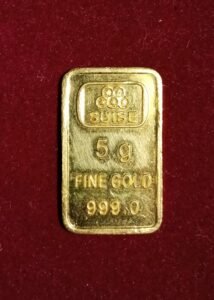The Historical Performance of Silver vs. Gold
The historical performance of silver and gold has showcased substantial fluctuations influenced by market conditions, economic cycles, and investor sentiment. Over the decades, both precious metals have exhibited unique trends that contribute to their appeal in investment portfolios. A closer examination reveals that while gold has often been regarded as a safe haven asset, silver has demonstrated characteristics that can lead to periods of outperformance, particularly during economic recoveries and inflationary environments.
Historically, the price movements of silver and gold are correlated, although silver is generally considered more volatile. During times of economic uncertainty, gold tends to attract significant investment as a store of value. However, when economic conditions improve, silver can surge due to its dual nature as both a precious metal and an industrial commodity. For instance, during the recoveries following the 2008 financial crisis, silver significantly outperformed gold, benefitting from increased industrial demand as economies rebounded.
Supply and Demand Dynamics for Silver
The supply and demand dynamics for silver present a compelling case for its potential outperformance relative to gold in 2025. One of the most pertinent factors influencing silver’s market is its mining production levels. Unlike gold, silver is often produced as a byproduct of mining other metals such as copper and lead. This dual supply stream can result in fluctuations that are closely tied to the broader mining industry. Notably, the concentration of silver mining in a few regions can make supply particularly vulnerable to geopolitical risks and environmental regulations, impacting availability.
Moreover, the industrial demand for silver has been steadily increasing, largely driven by its applications in technology and renewable energy sectors. Silver’s superior conductivity makes it essential for electronic manufacturing, solar panels, and batteries. As the world shifts towards green technologies and sustainable energy solutions, the demand for silver in these applications is projected to rise sharply. In contrast, gold does not experience the same level of industrial utilization, making silver a more attractive option for investors looking to capitalize on the expansion of these sectors.
The recycling of silver also plays a crucial role in its supply dynamics. While recycling can supplement market supply, the overall impact varies based on silver prices and global economic conditions. Increased recycling efforts may arise as silver prices rise, but they typically lag behind demand growth. In comparison, gold recycling rates are typically more stable, reflecting a difference in how each metal’s market reacts to pricing pressures.
These unique supply and demand factors present silver as a market with distinct advantages relative to gold as we approach 2025. Balancing growing industrial demand against potential supply constraints will be crucial in determining silver’s trajectory in the coming years.
Economic Indicators Favoring Silver in 2025
The macroeconomic landscape leading into 2025 presents several indicators that could favor silver over gold as the preferred investment vehicle for many investors. One significant factor is the trend of rising inflation rates, which have been observed in various economies worldwide. Historically, precious metals such as silver and gold have been regarded as hedges against inflation. However, in an environment where inflation expectations are high, silver’s industrial demand may enhance its appeal. As industries increasingly seek to integrate silver into technology, sustainable energy, and medical applications, its intrinsic value could rise, reflecting greater demand beyond its status as a monetary asset.
Another critical indicator is the ongoing fluctuations in interest rates. Central banks have been adjusting their policies in response to economic recovery post-pandemic and shifting inflationary pressures. If interest rates remain low, the opportunity cost of holding non-yielding assets like silver diminishes. This scenario may encourage investors to allocate more capital into silver as a strategic investment. Conversely, should central banks raise interest rates sharply, gold traditionally retains its allure for risk-averse investors; however, silver’s industrial applications could offset some of this impact due to its utility-driven demand.
Geopolitical tensions are also likely to play a crucial role in investor sentiment towards silver in 2025. As global uncertainties increase, many investors might gravitate towards precious metals as safe-haven assets. While gold has long been viewed as the primary vehicle during times of crisis, the unique supply-demand dynamics surrounding silver may attract attention. Notably, silver is more exposed to technological advancement and green energy initiatives, which could drive its demand significantly, setting it apart from gold. In this environment, market dynamics may shift in favor of silver, showcasing its potential for substantial returns in the coming year.
Market Sentiment and Investment Trends
The evolving landscape of market sentiment surrounding precious metals reveals significant trends that could lead to silver outperforming gold by 2025. Retail investment interest in silver has seen a notable uptick, especially among individual investors seeking more affordable entry points into precious metals. This rising enthusiasm is partly fueled by grassroots movements and the perception of silver as not only a store of value but also a critical component in green technologies, such as solar panels and electric vehicles.
Moreover, silver-backed exchange-traded funds (ETFs) have become increasingly popular as investment vehicles. These ETFs allow investors to gain exposure to silver without the challenges associated with physical storage and security. The inflow of capital into these silver ETFs indicates a strong belief in the metal’s potential for appreciation, driven by both economic factors and growing demand in industrial applications. Analysts predict that as more investors turn to silver-backed ETFs, there will be a corresponding shift in market dynamics that could favor silver investments over gold, especially if price disparities persist.
Social media and online communities significantly influence public perceptions and investment decisions. Platforms such as Twitter, Reddit, and dedicated investment forums have provided a space for discussions around the potential of silver. The viral nature of certain trends can lead to rapid increases in retail investment, which is often characterized by a collective sentiment that can create momentum in the market. As communities rally around silver, this could attract even more attention and capital flow into the metal, enhancing its visibility compared to gold.
Projections from financial analysts suggest that increasing retail participation, alongside the structural advantages of silver in industrial use, will drive investment flows towards it in the lead-up to 2025. This convergence of market sentiment and investment trends positions silver as an emerging favorite for investors, drawing a marked contrast to gold and potentially redefining its status within precious metal markets.





